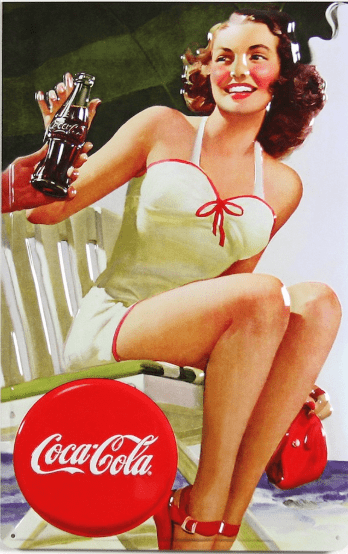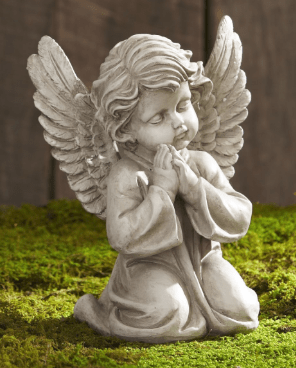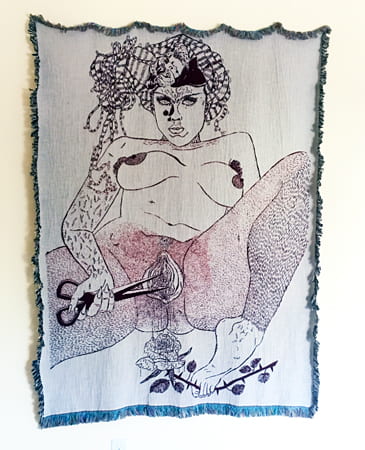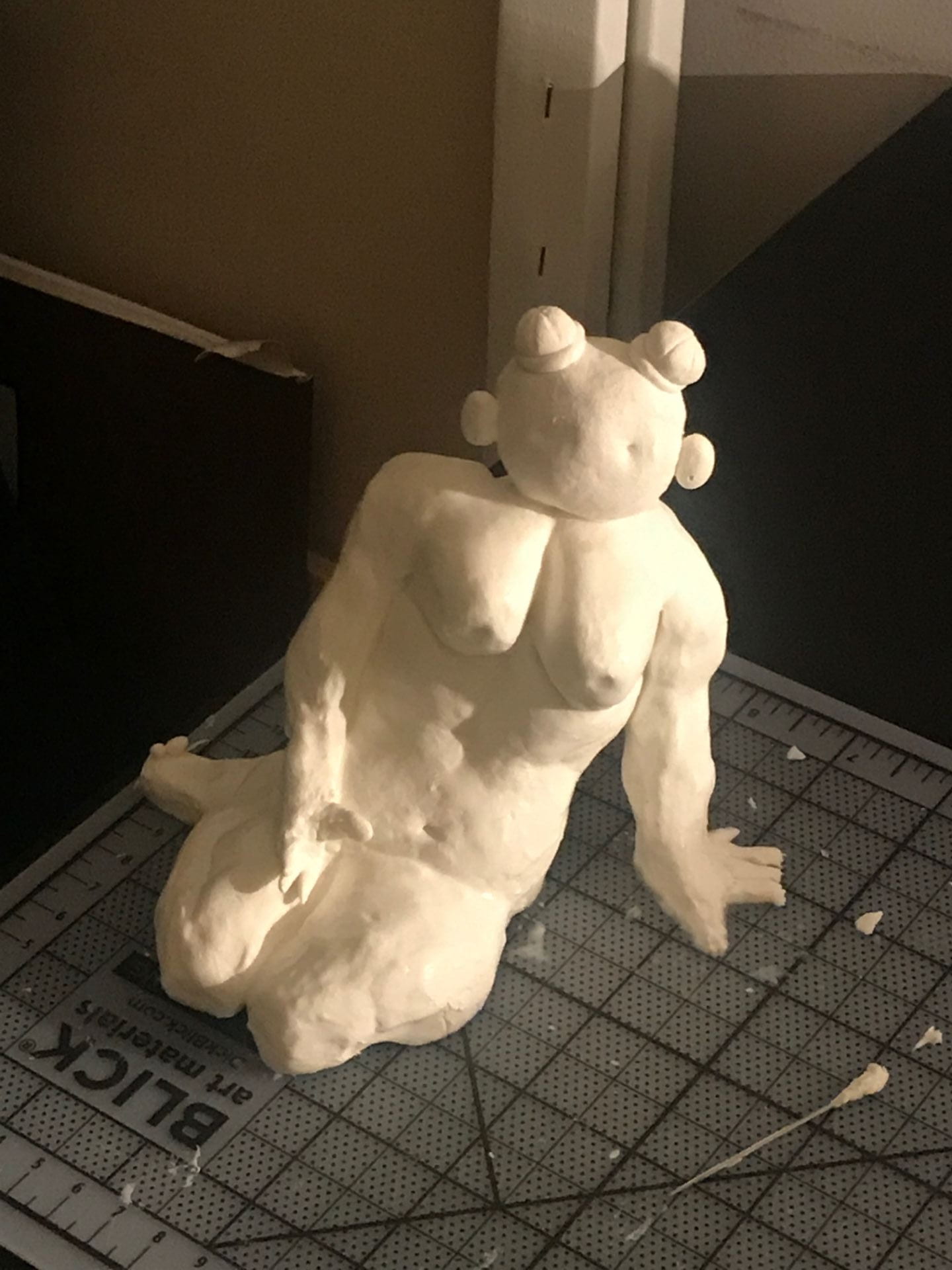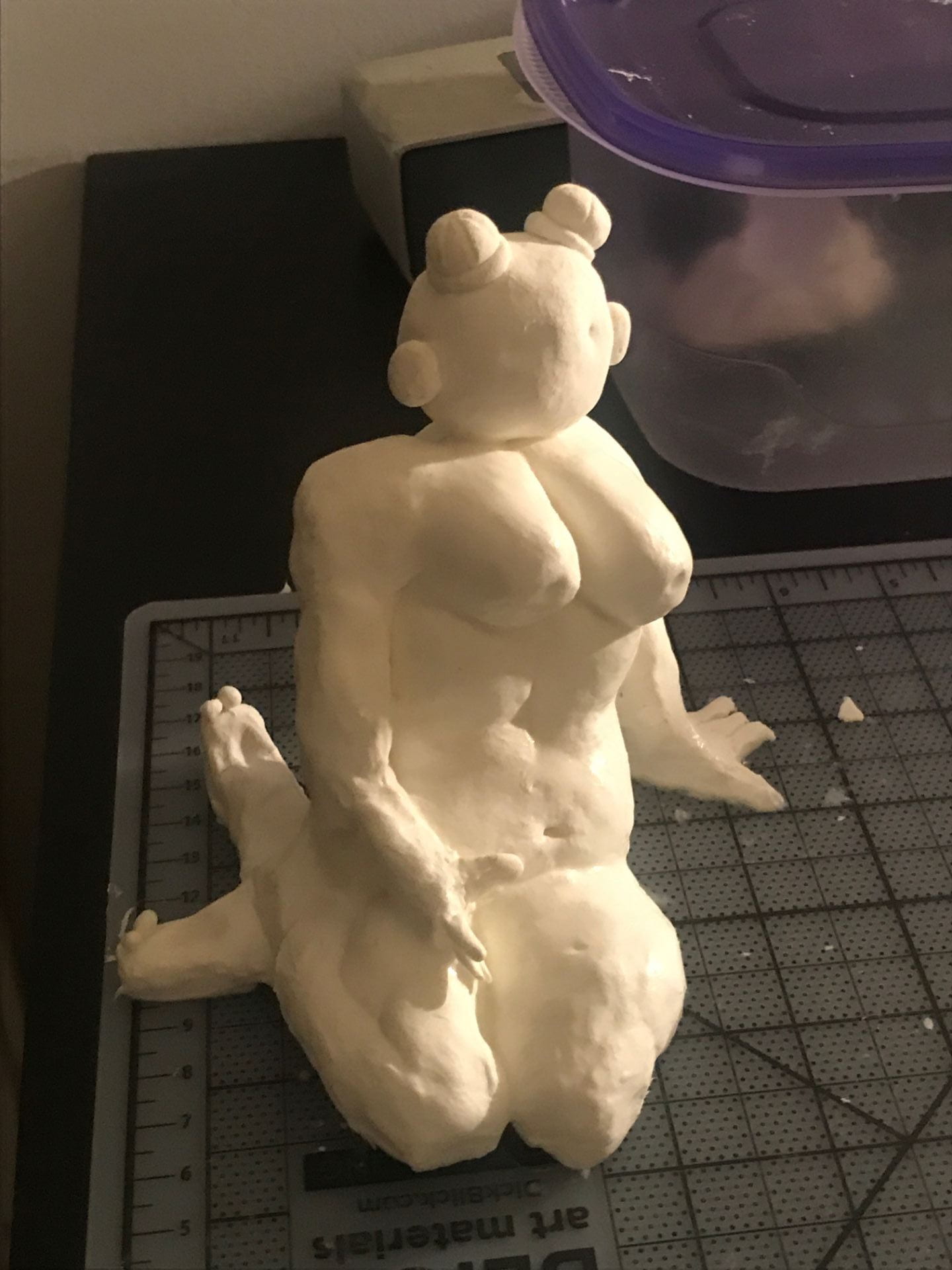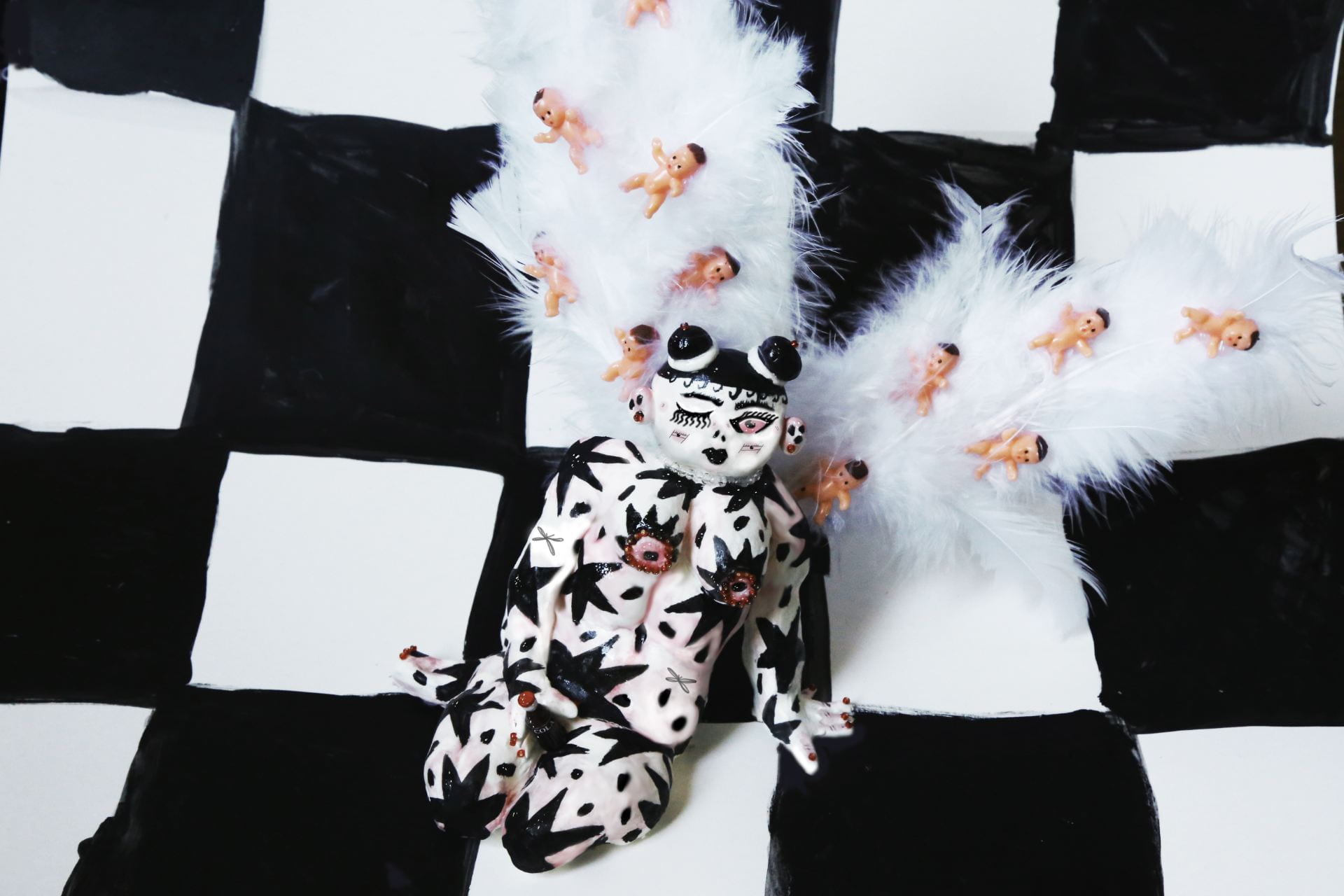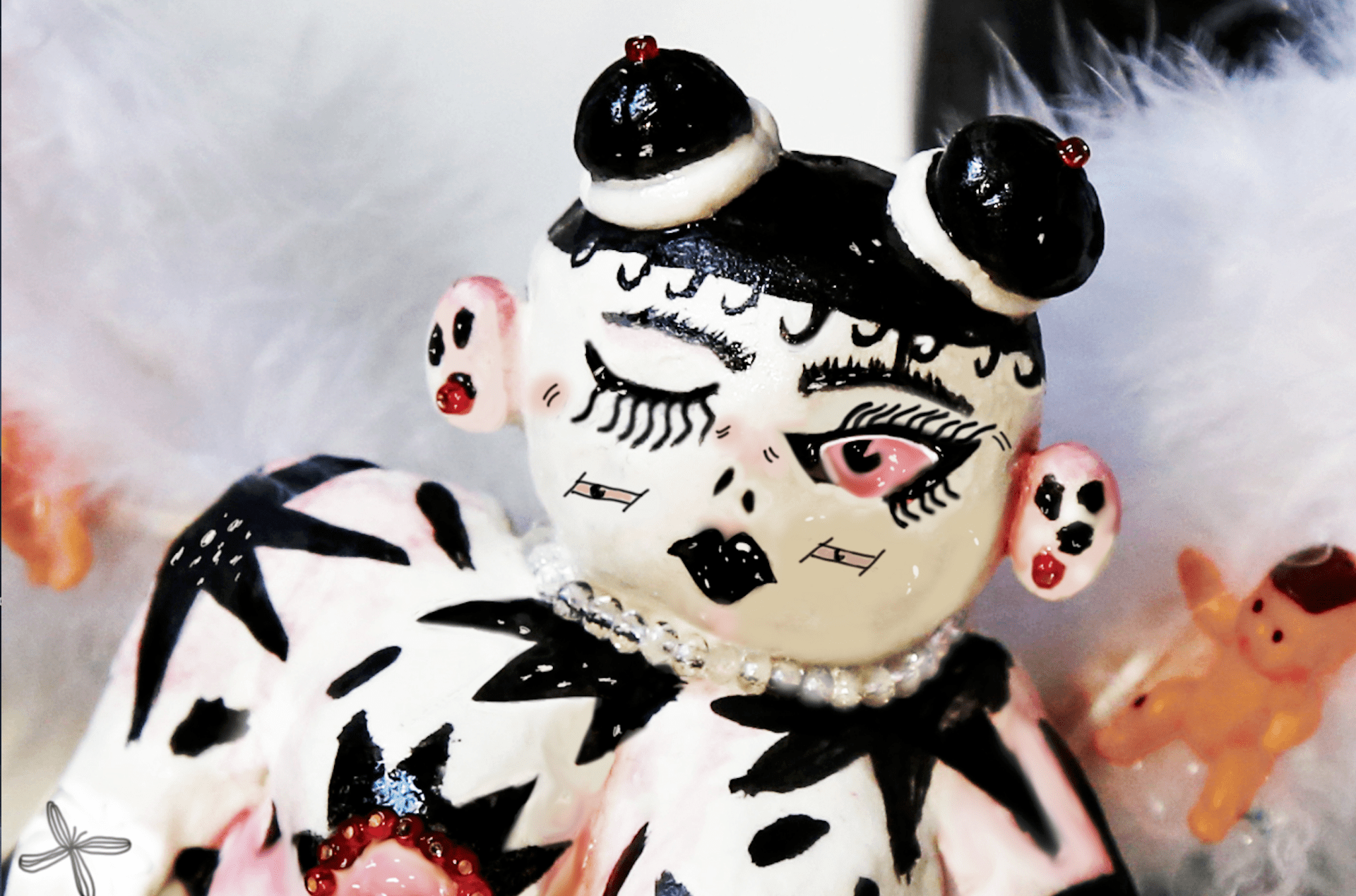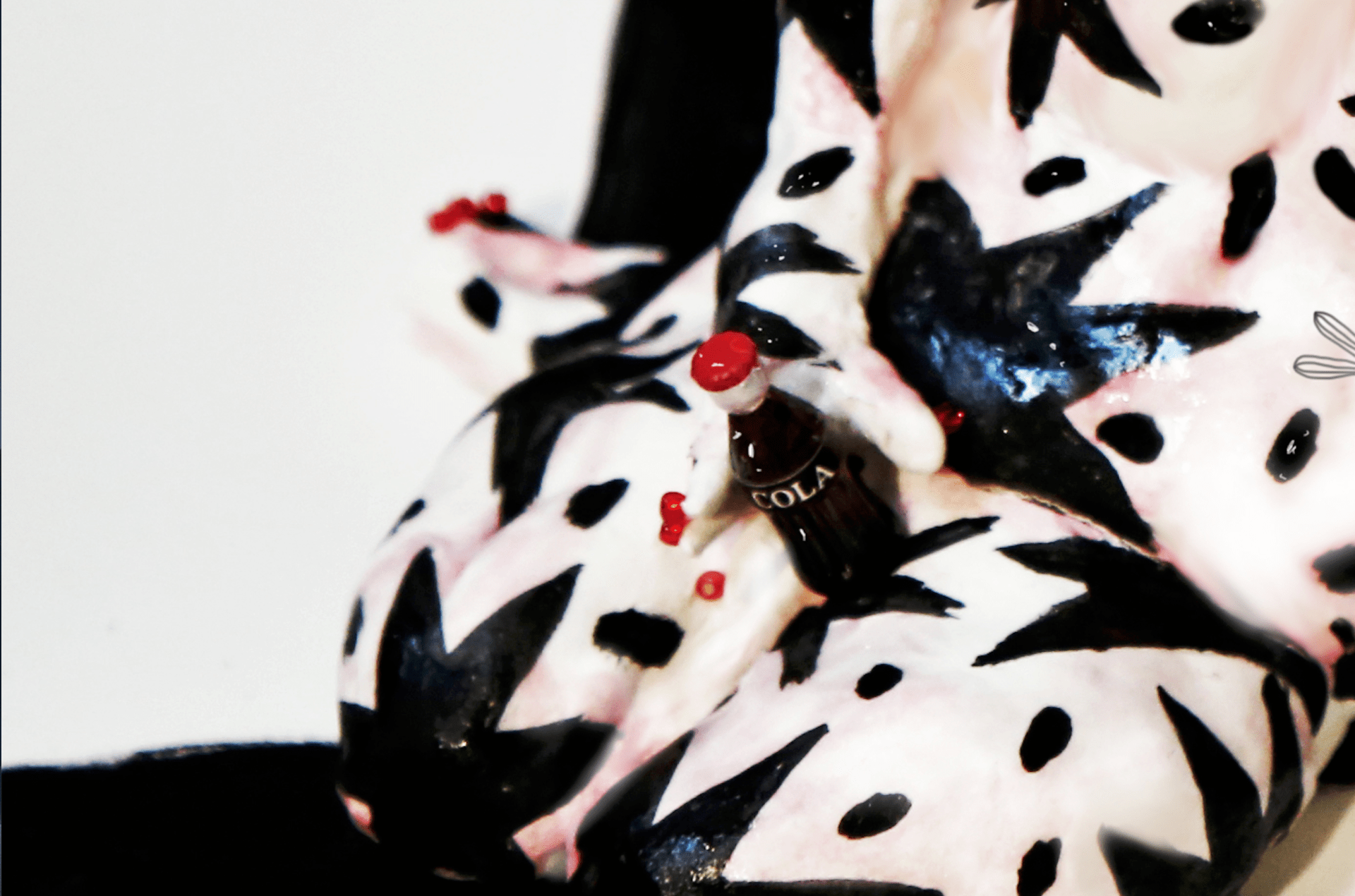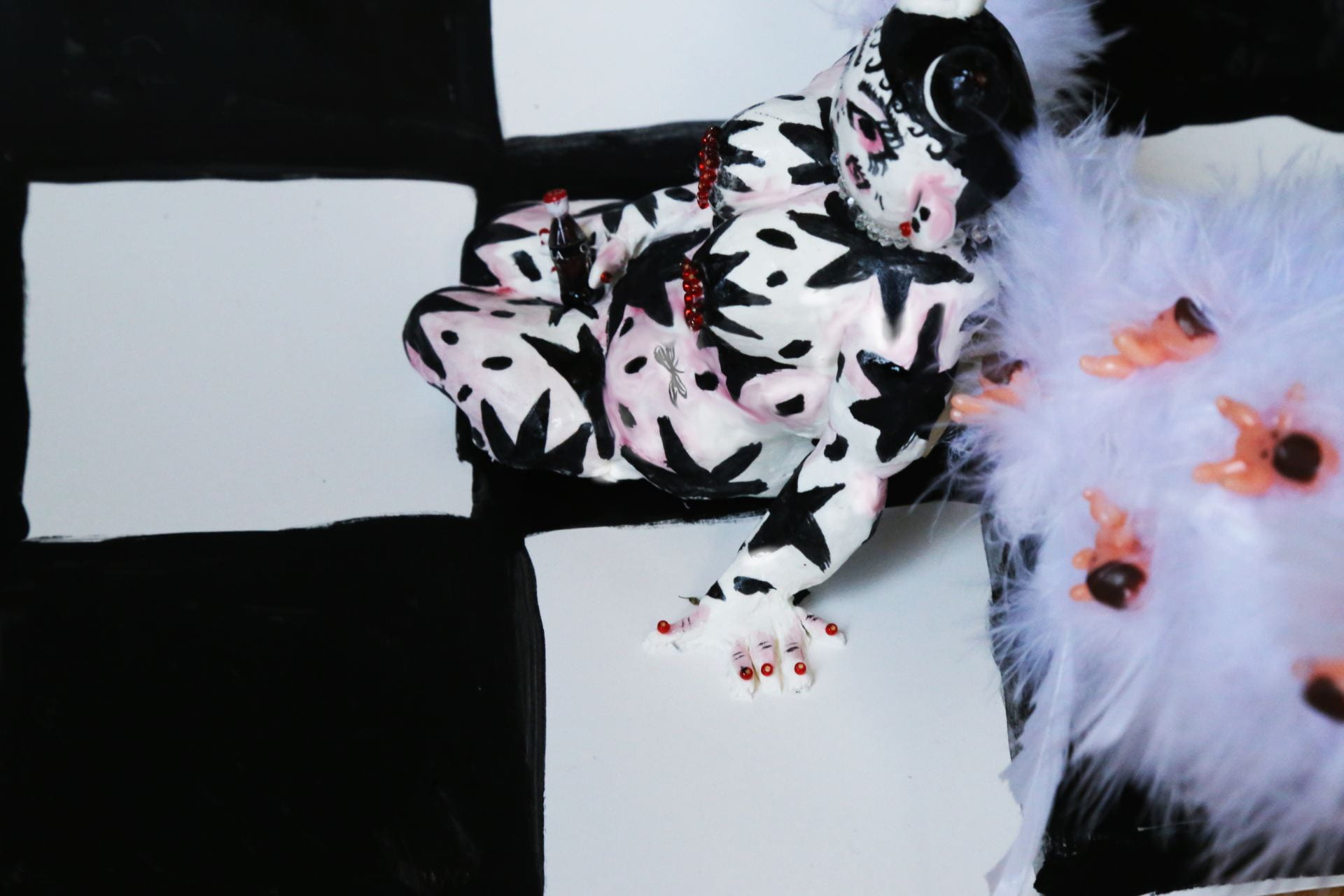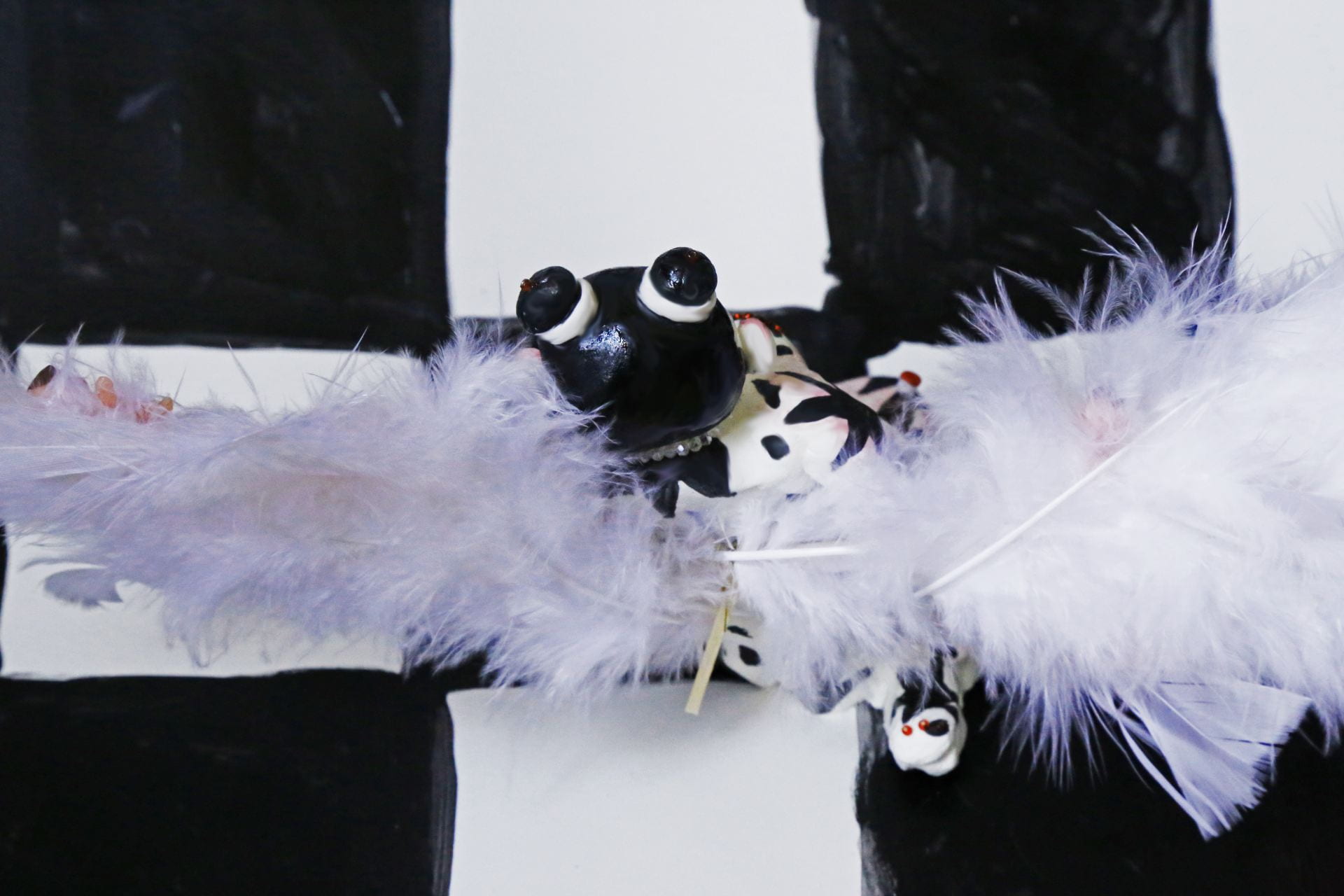Research:
For this sculpture I wanted to capture a state of feminine trauma. I wanted this figure to be a mix of a coca-cola girl in an old 1950’s ad and a cherubic religious figure in one. I wanted her to represent the discomfort of a feminine body from internal and external pressures, the need to perform and present, to be beautiful, to be cool, to have babies, (all the babies). I wanted this figure to look as if she were in decay or pain while still remaining beautiful.
Both the coca-cola girl and the cherub are created for the same purpose-as decoration and consumption of an object that is perceived as sweet and innocent. In the readings after our lecture, I was inspired by the contradiction of abject objects to those of desire through a figure that does not respect rules or borders.
I also found an artist named Heather Benjamin this year that also inspired the aesthetic of this work. She also deals with themes of feminine struggle and feminine bodies. I found this image that she created and wanted my figure to mimic the harshness with pattern, beads, and paint.
Development
The figure itself was based off of some drawings I made. I wanted this cherubic woman to have articulated wings, and for that I researched how to make a ball in socket which I attached on the back.
This video isn’t an exactly a tutorial but just seeing the visual repeatedly helped me understand how the system worked. After I watched this video, I carved a hole in the clay, and used a piece of wire with a ball attached that would fit in the hole. I then secured a piece of wire over it so the wings could only move laterally, and glued the edges.
I then tried to create an automata structure for the sculpture to sit on, so the wings could move without having to touch the sculpture. After many attempts, it ultimately didn’t work out since the wings were too heavy for the basic structure. I did learn how to make an automata though and will keep the concept in mind for the future. Here are my attempts anyway:
Writing:
In Julia Kristeva’s Powers of Horror: An Essay of Abjection, she describes subjective horror (abjection) to recognizing one’s corporal reality, of what is of the self, and what is “other.” Much like the uncanny valley, we feel discomfort when hyper-aware of our own mortality and human form. This concept is often utilized to understand trauma and horror that manifests in the praxis of systematic oppression. An abject figure is uncanny, it disrupts social order and makes you aware of the spaces both in and outside of social and physical bounds. With my figure, I wanted the viewer of this object to become hyper-aware of the figure’s boundaries and otherness. If abject is usually describing something horrific and disgusting, what does it mean when it is placed upon an object that is usually created for desire?
According to Kristeva, abject subjects must be disguised from desire, and despite everything, we are attracted to the abject as it contains both “fear and jouissance.” Therefore, the abject is closely tied to religion and art, where through these practices we can find catharsis from the abject through ritual and aesthetic.
In order to walk this line of abjection and beauty, I decided to create a figure that was based off images that evoke pure desire. The ads from the 1950’s featuring the “coca-cola girl” is what I define as the opposite of abject and horror. In advertising, we are meant to identify with its subjects, and in turn buy the product and therefore its ideology. My figure is a rejection of classic feminine ideology, and an exposure of the traumas it can create. Instead of a celebratory feminine figure or an objectified one, we are confronted with a figure that confronts us as well. My figure is the exposure of pain and horror and therefore the exposure of the uncanny as we become aware of our own bodily traumas that we endure and often unknowingly express. Coupling the coca-cola imagery with religion, I decided to loosely base the figure off religious iconography of a cherub as well. Both women and cherubic figures are supposed to be visual respites that never reveal pervasive oppressions, and stand for innocence and beauty. With the mixture of art and religion in one figure, I wanted this abject yet beautiful body to cyclically binge and purge on its own aesthetics.
Documentation:
